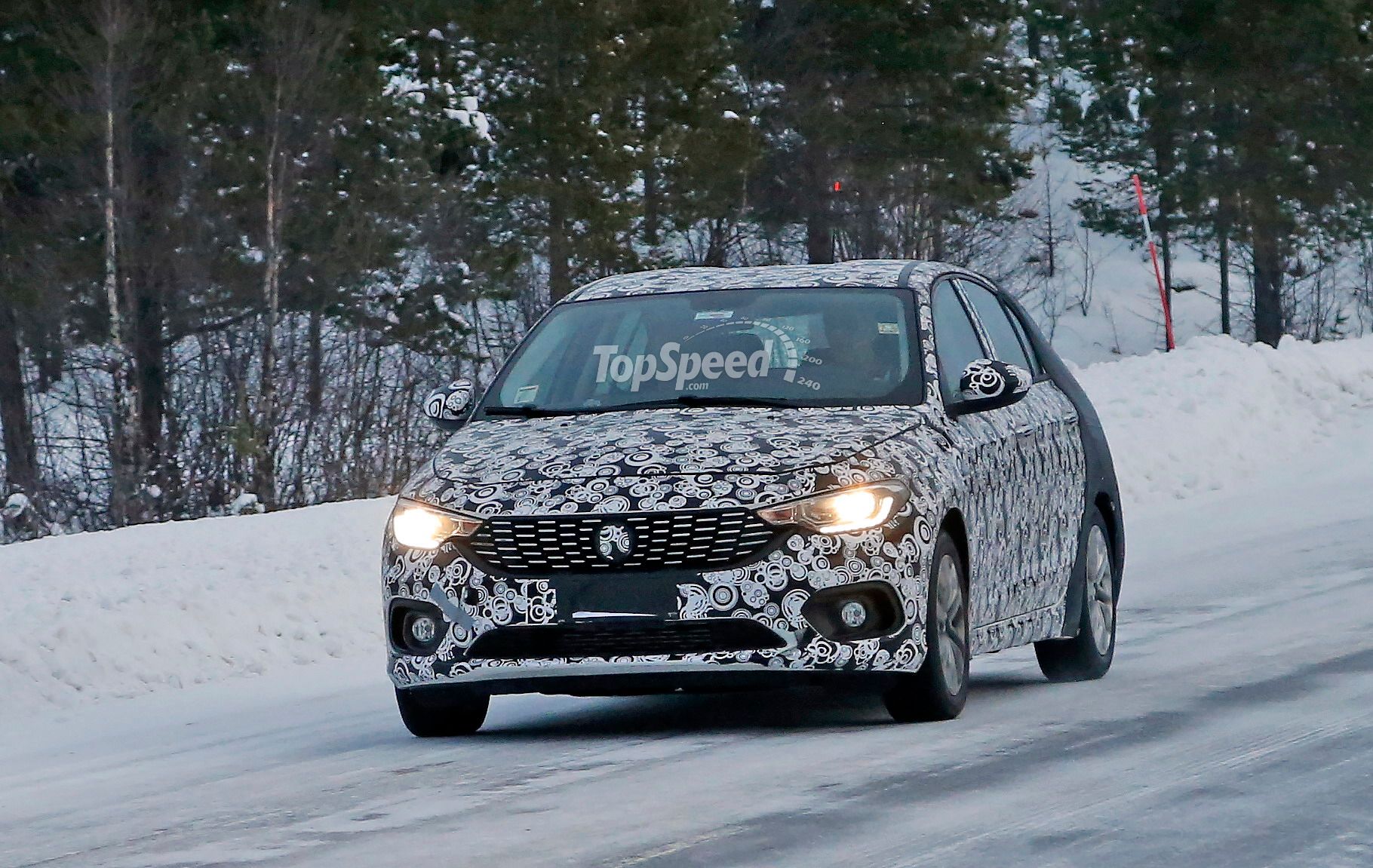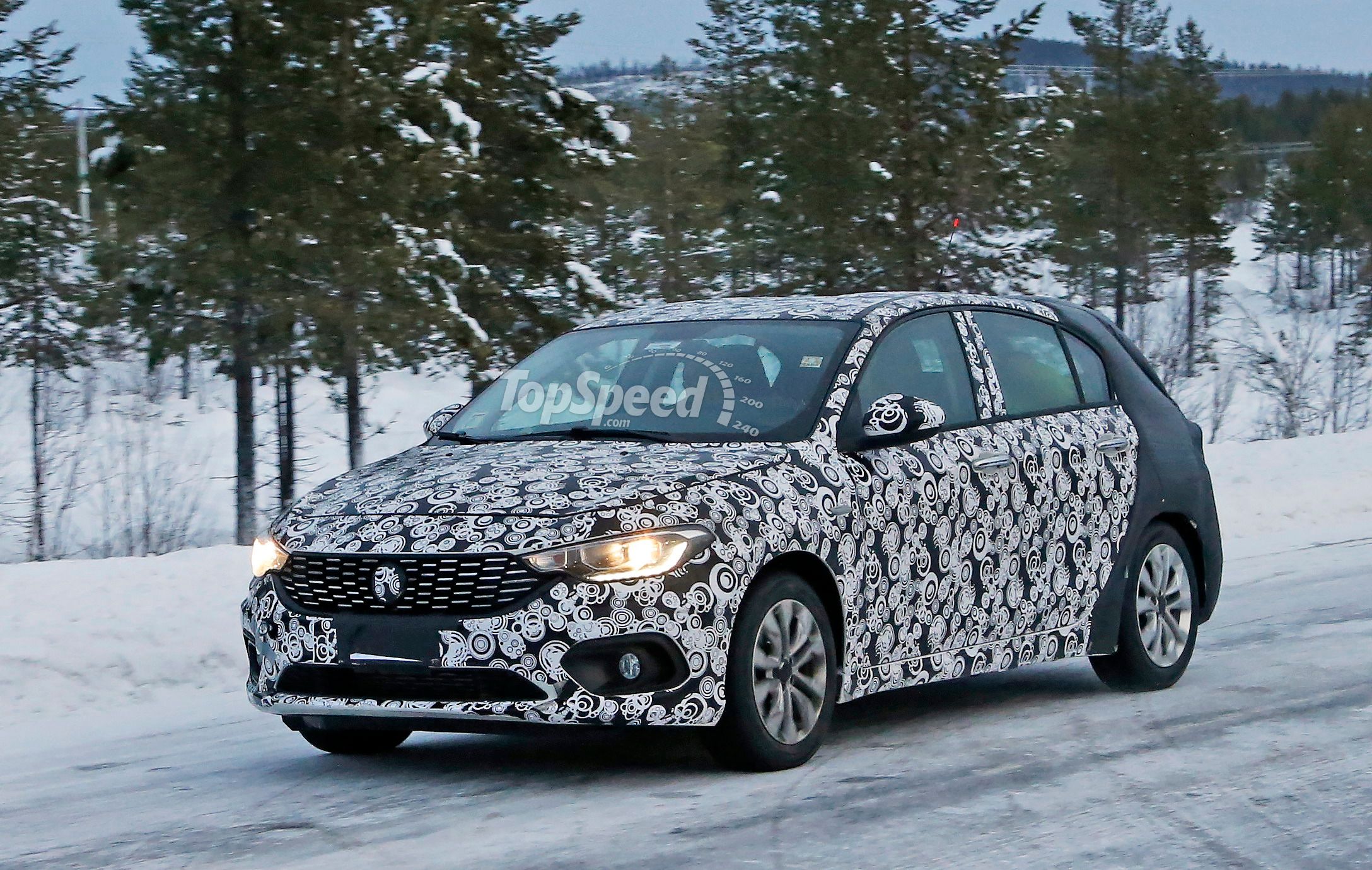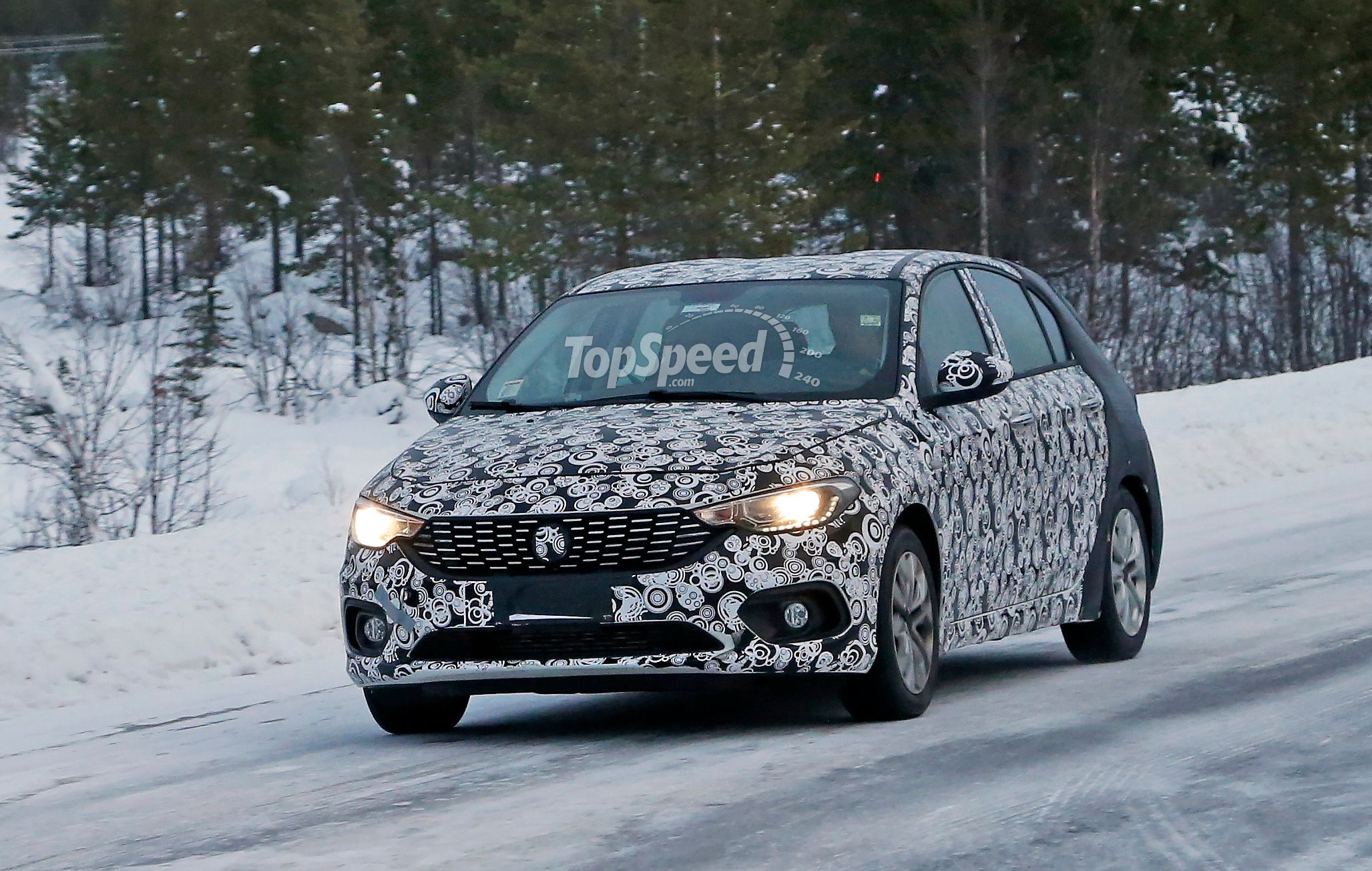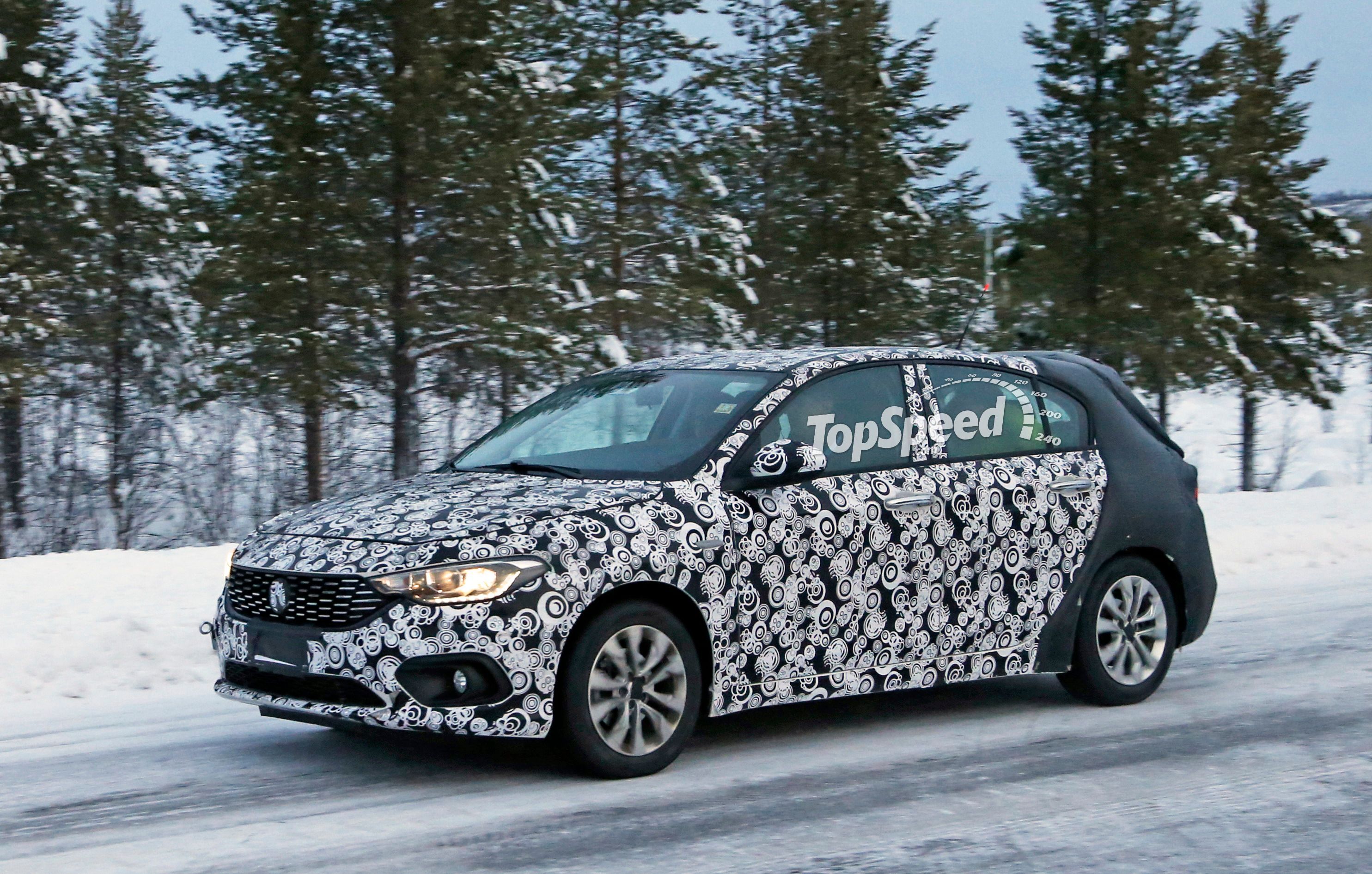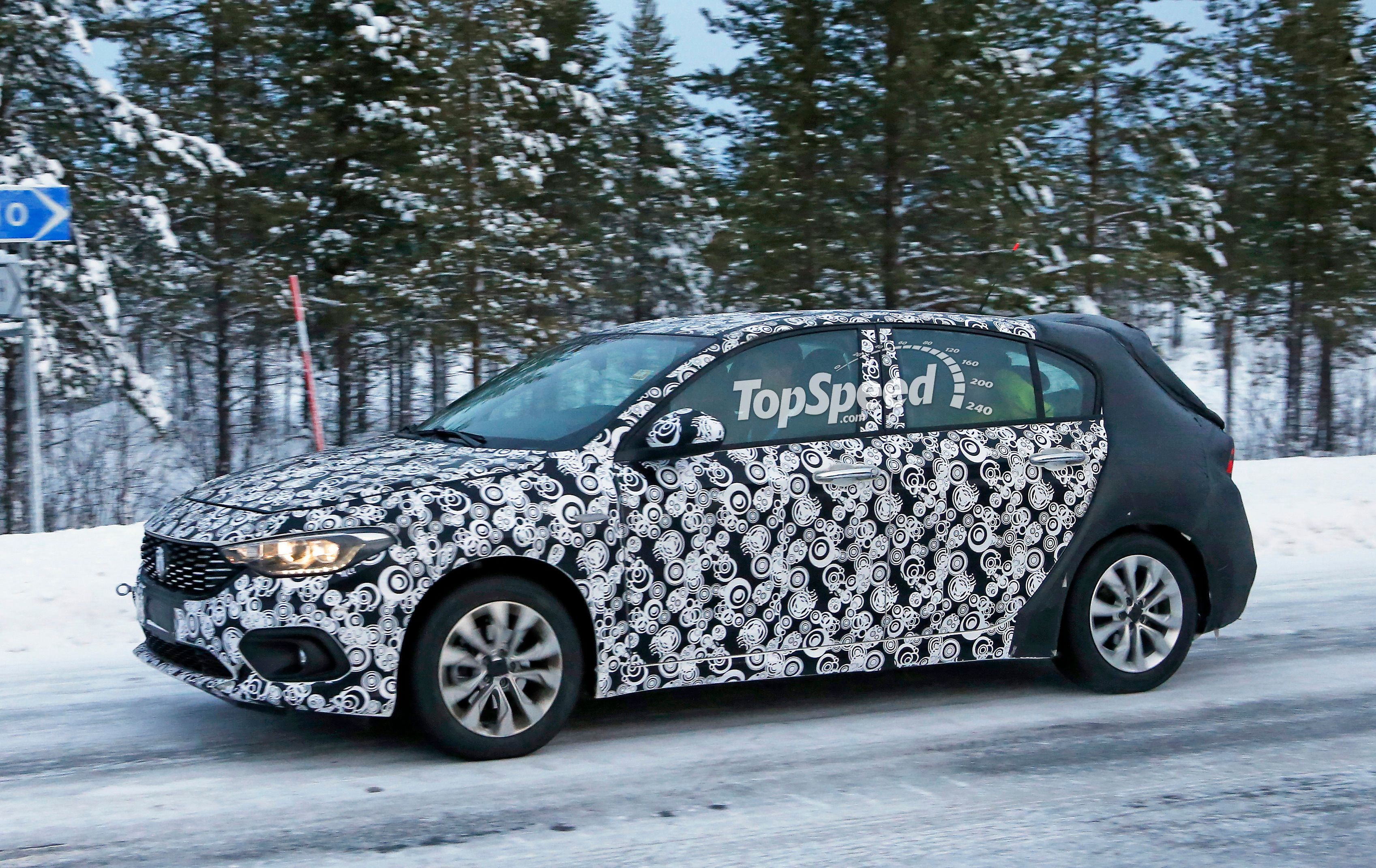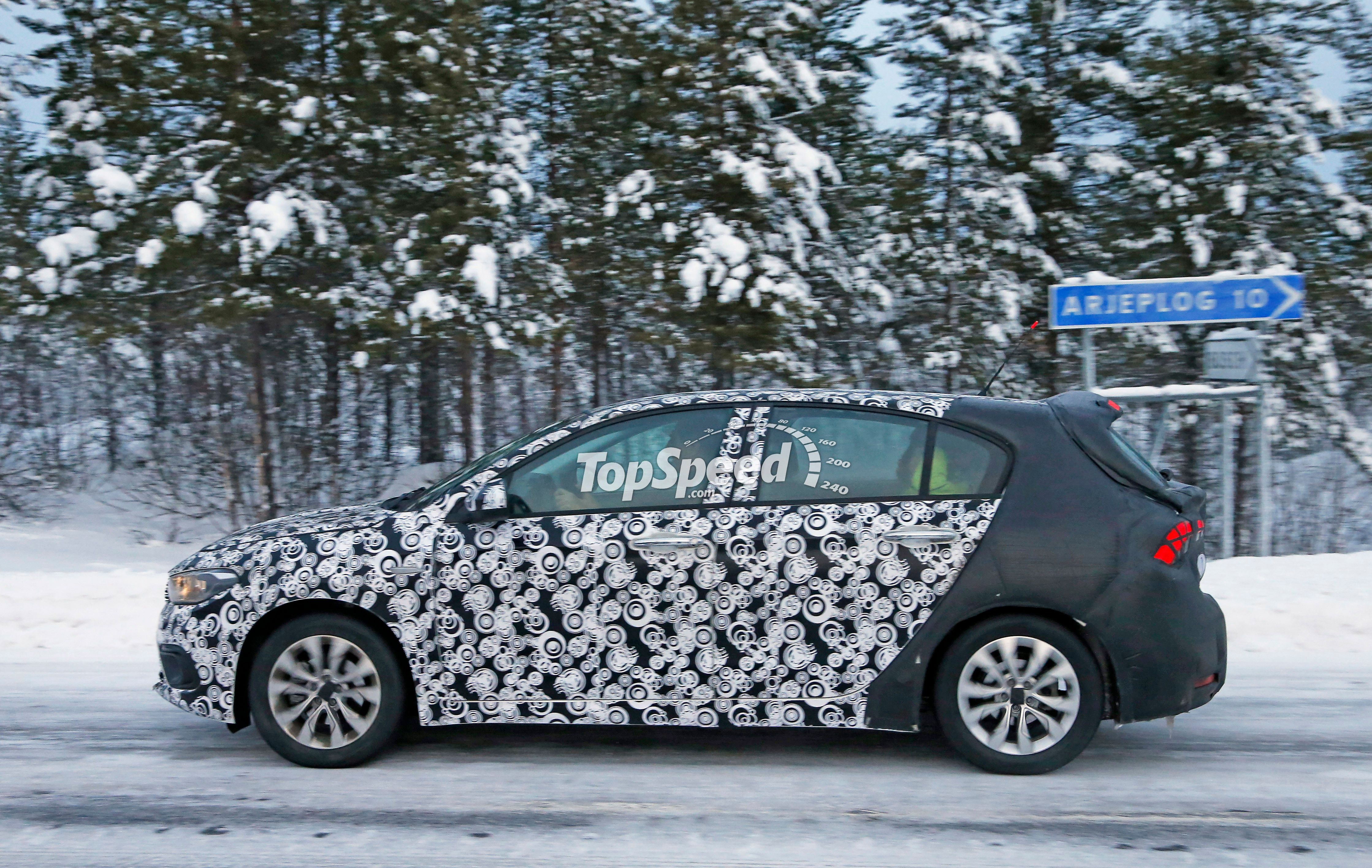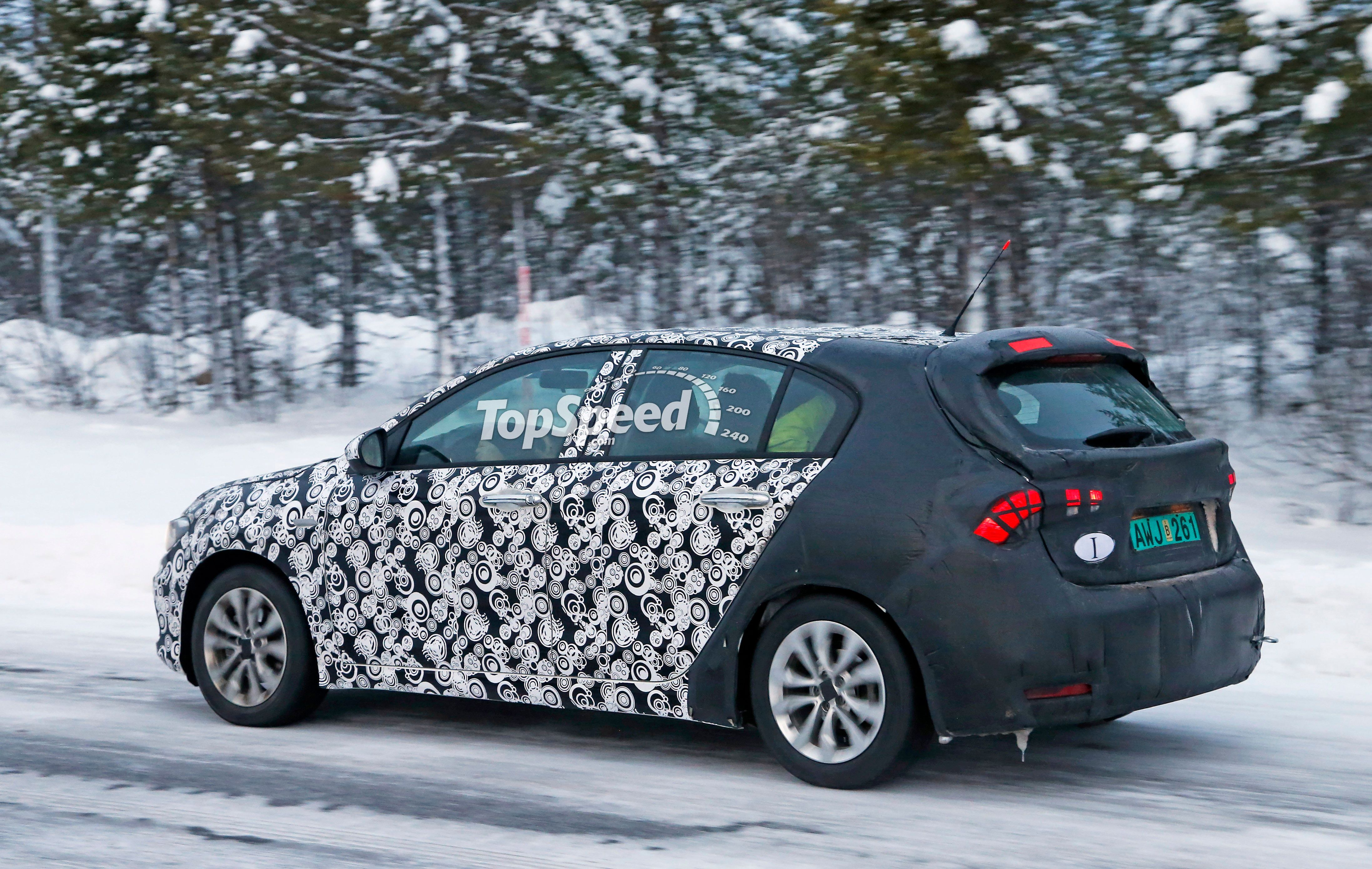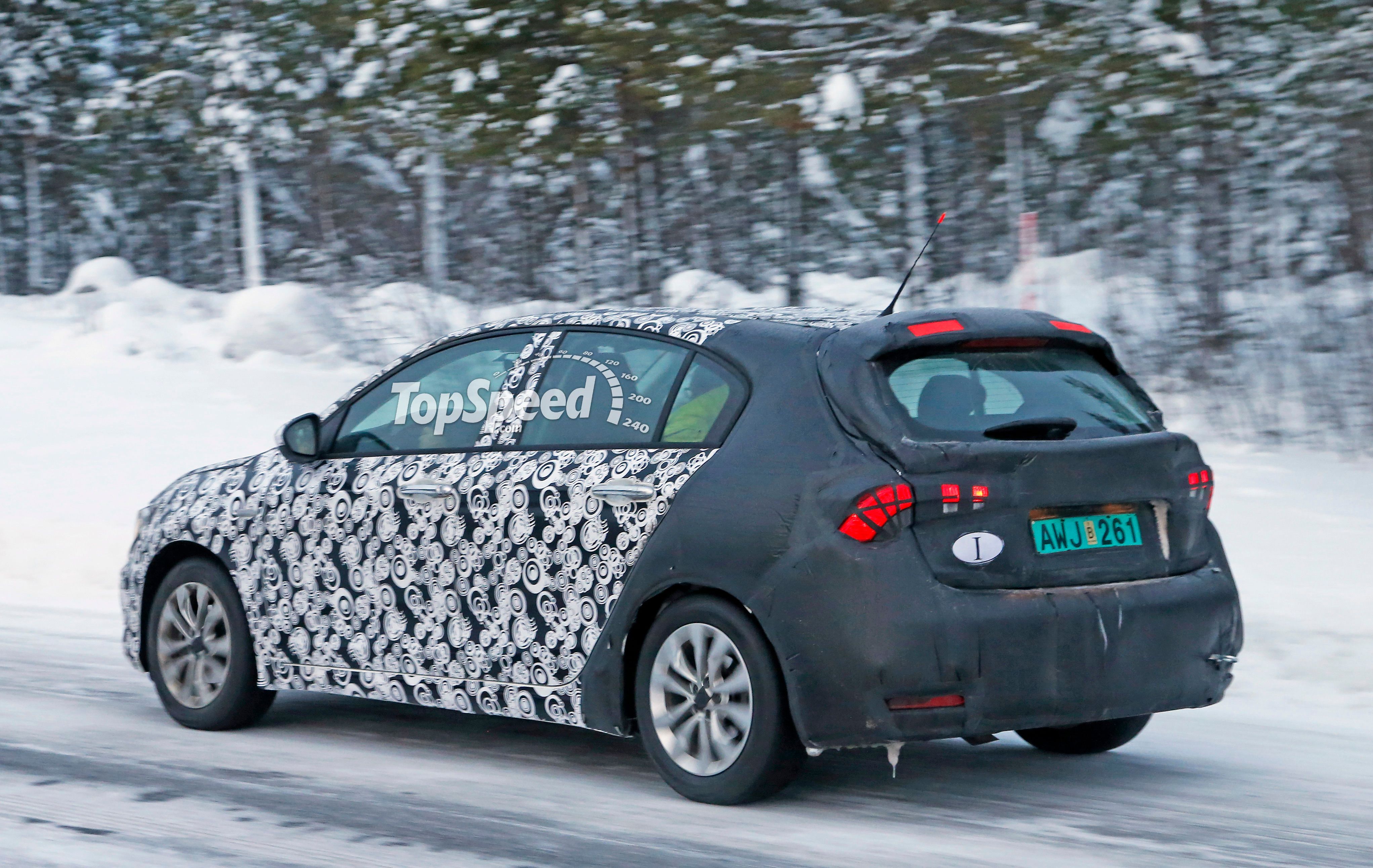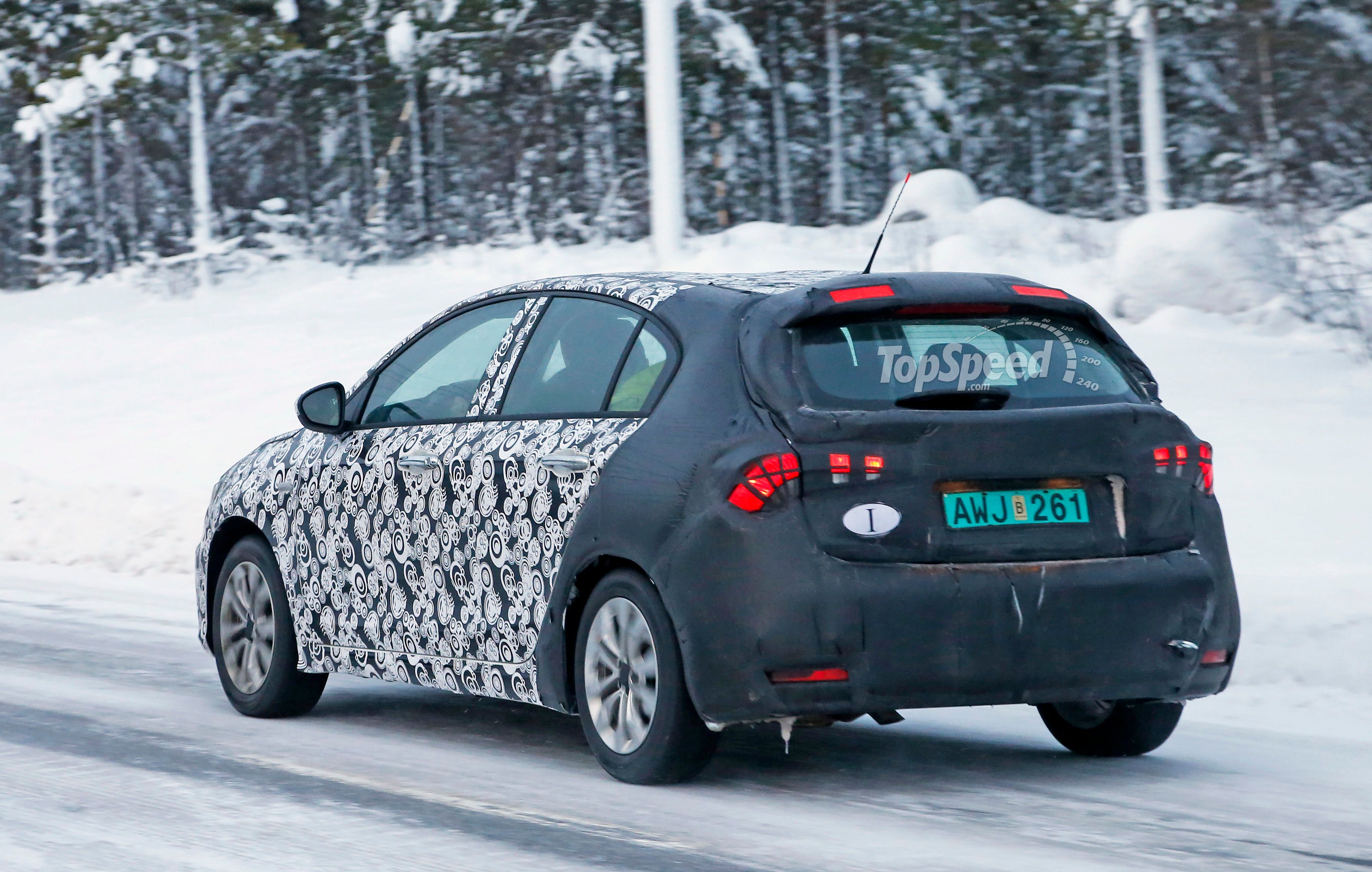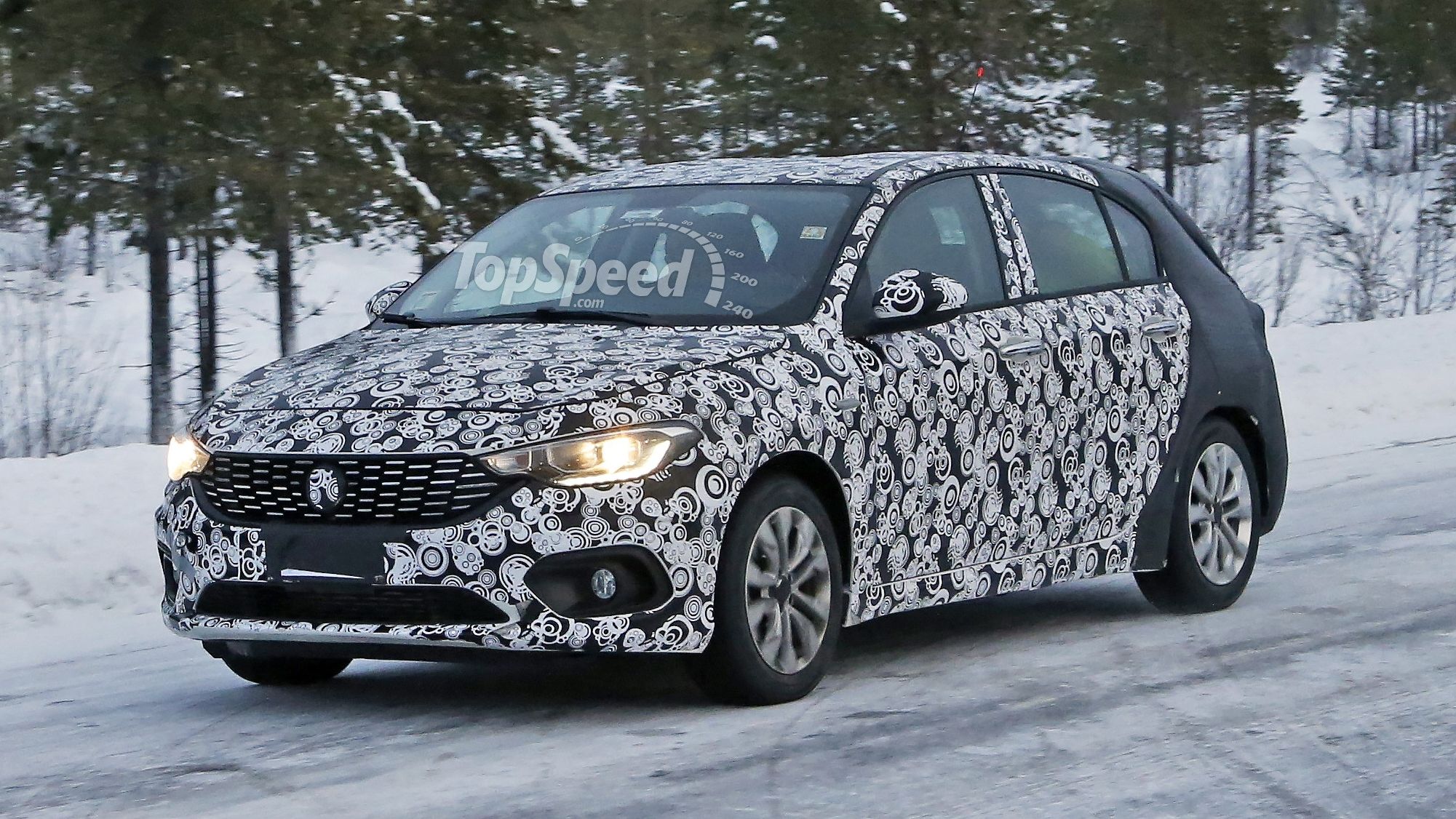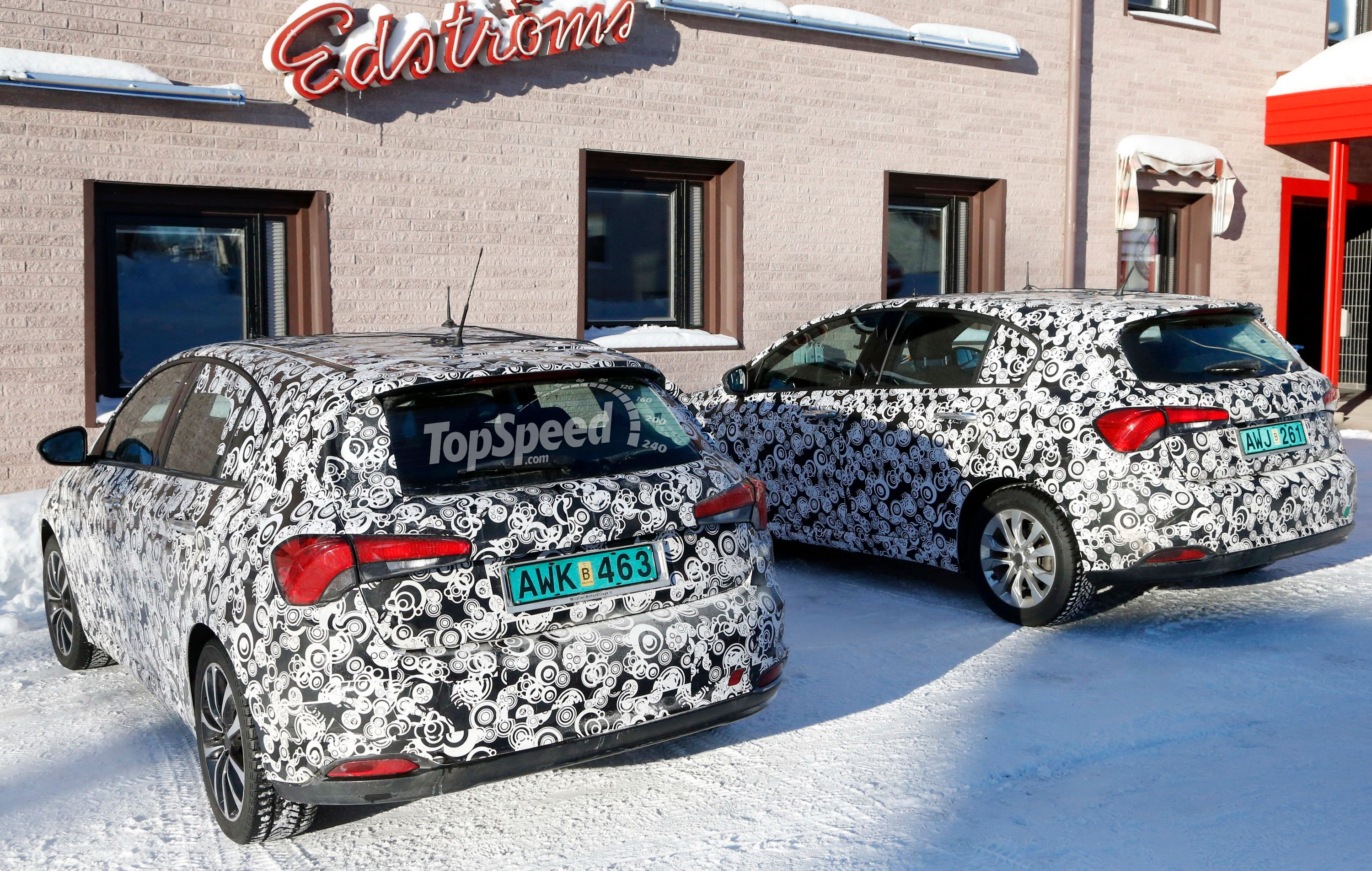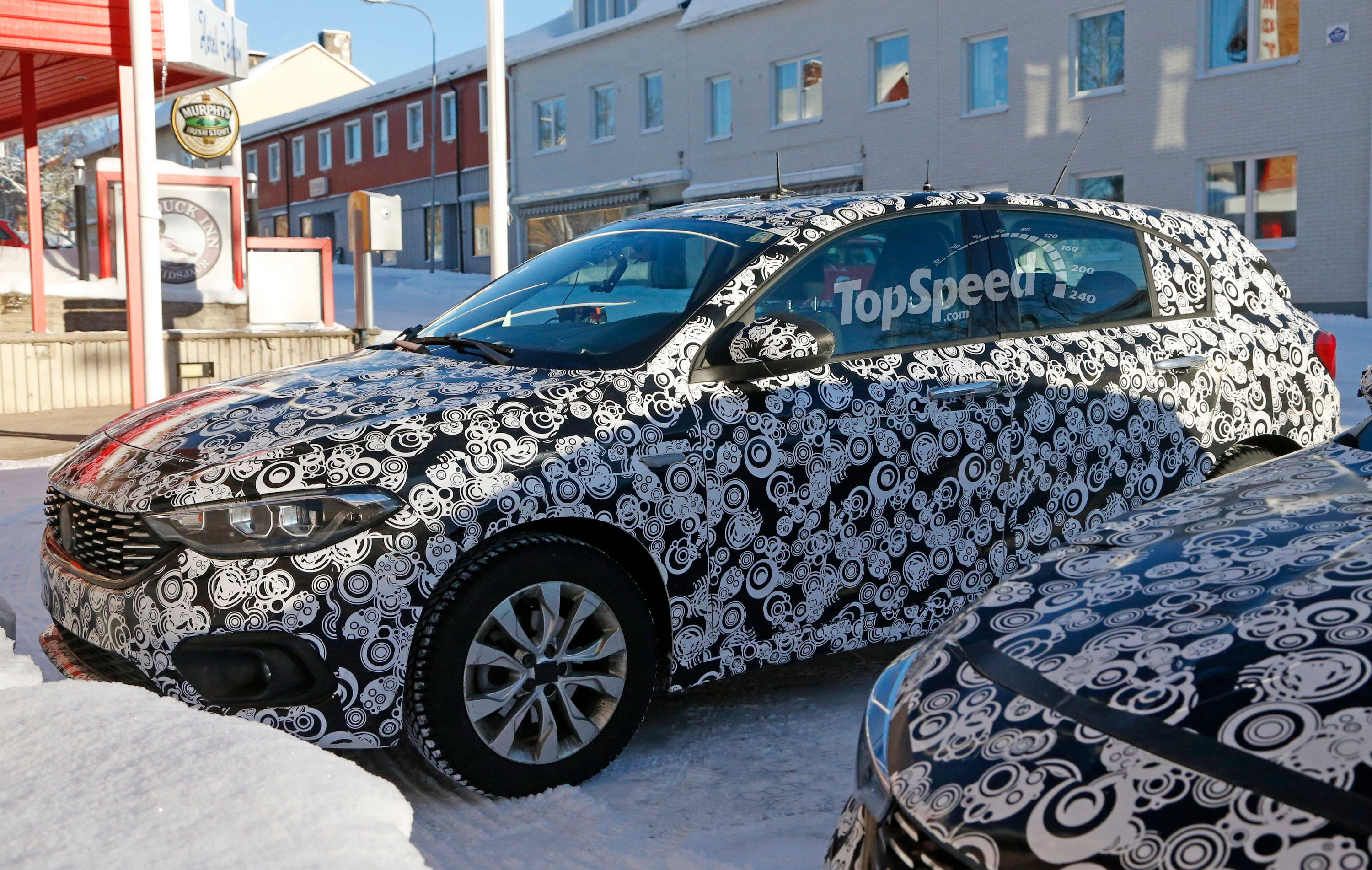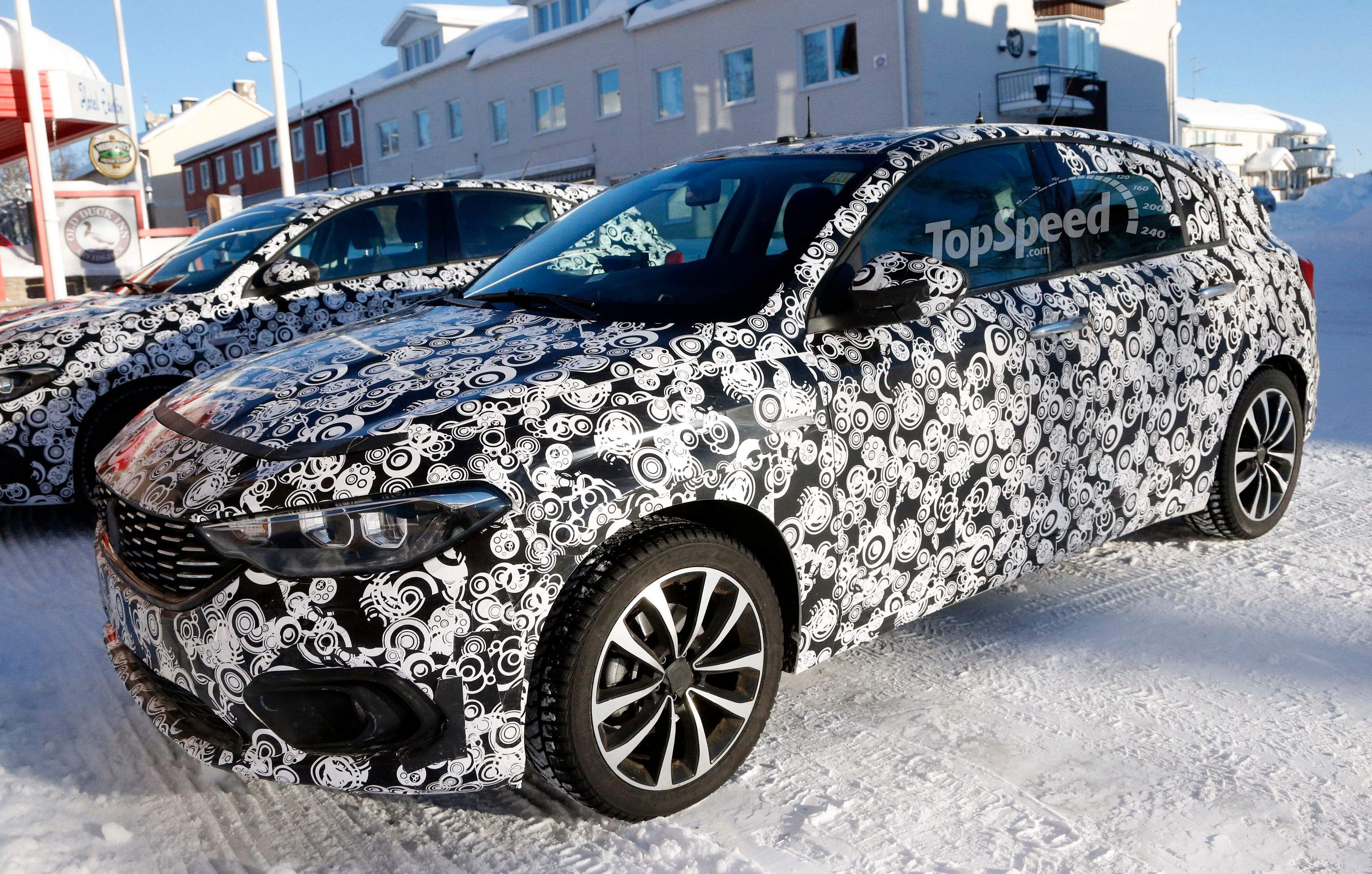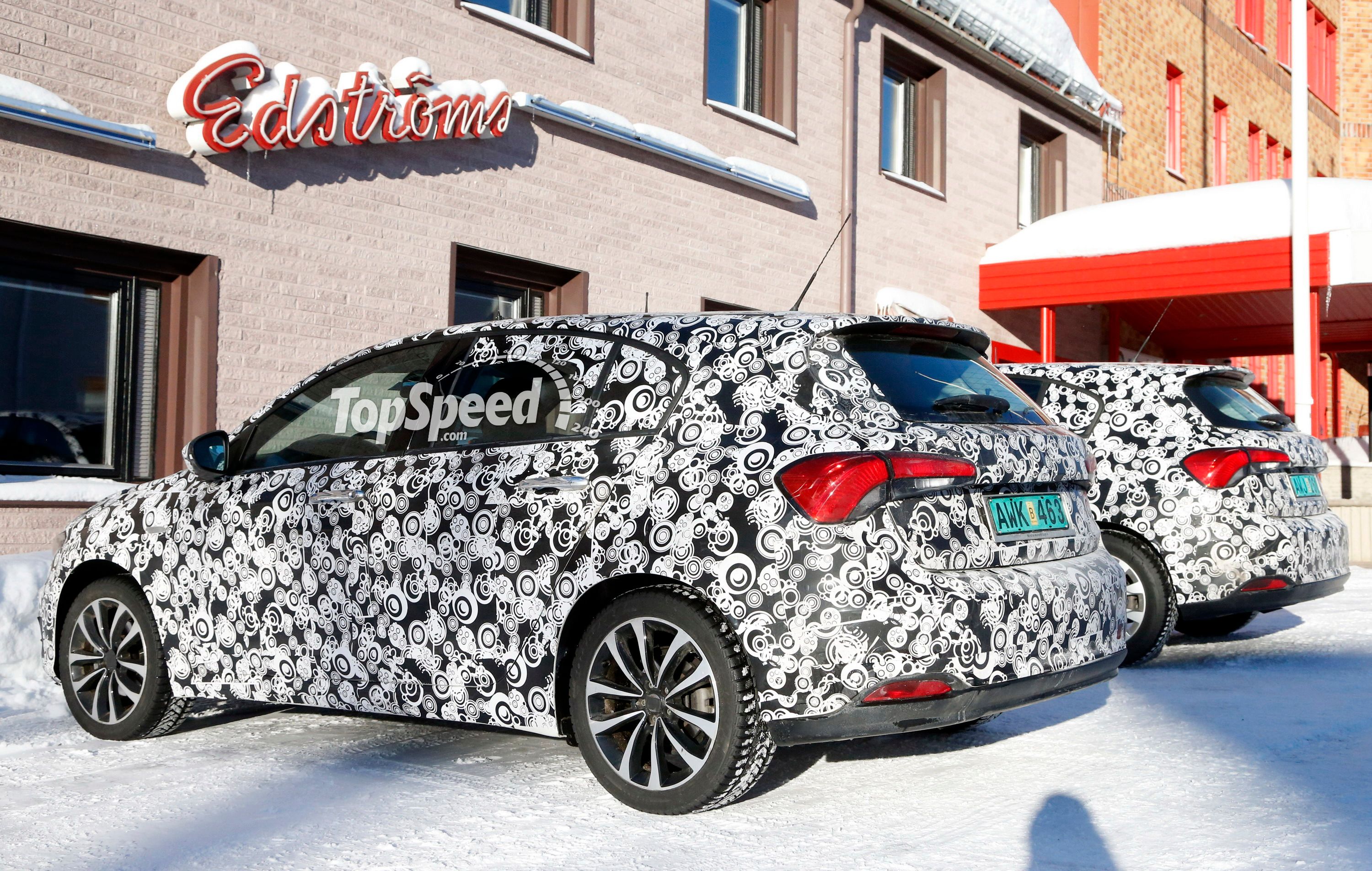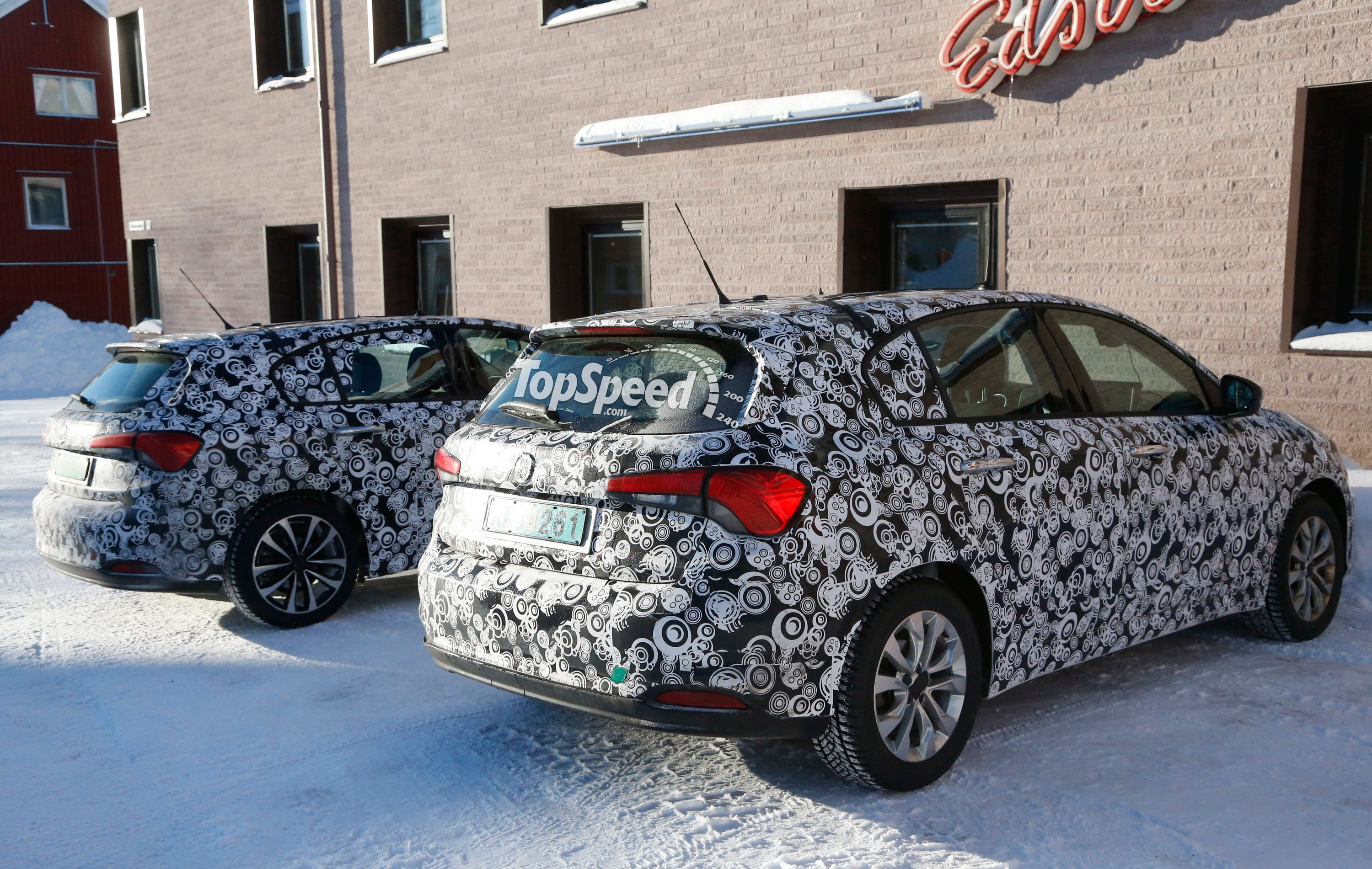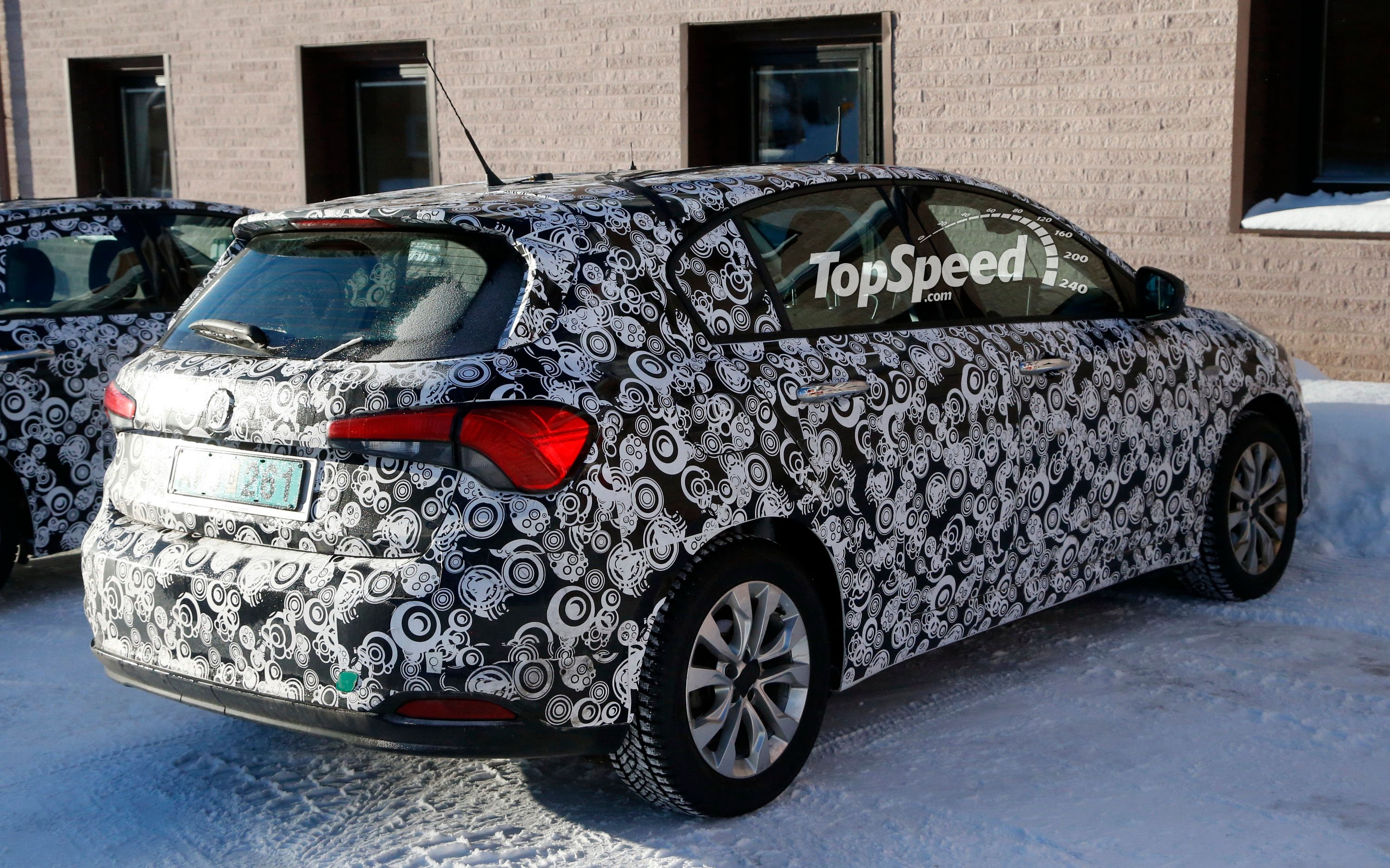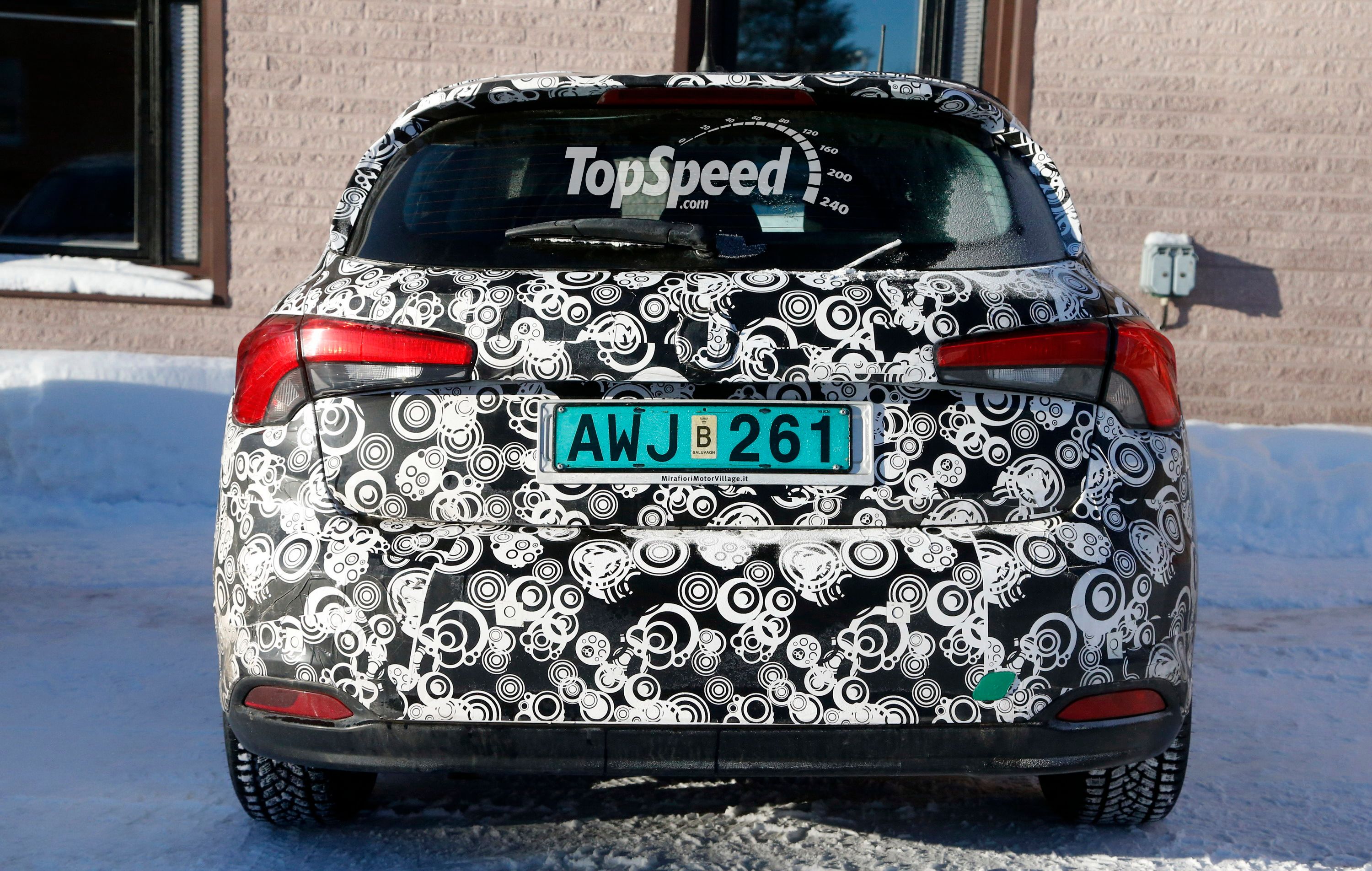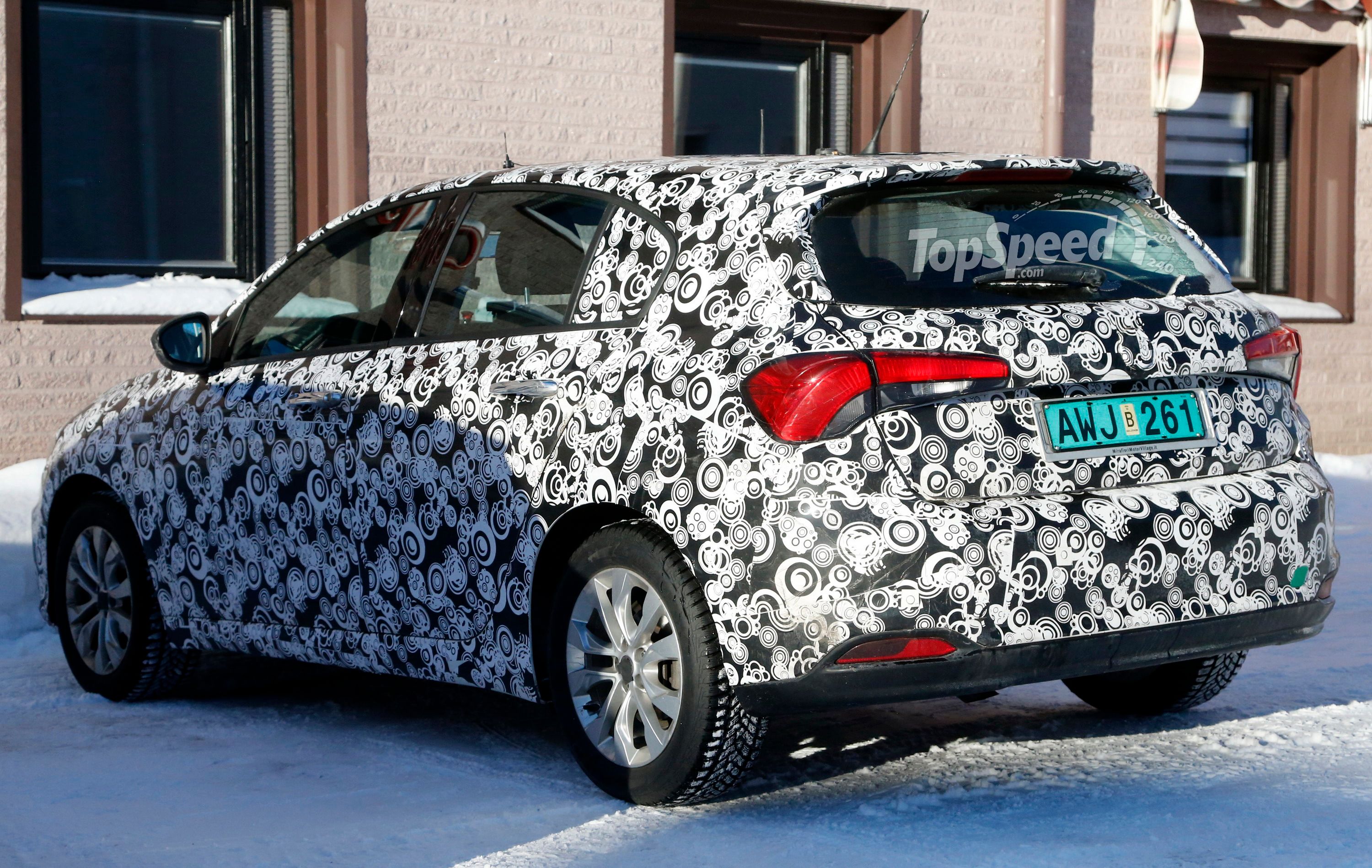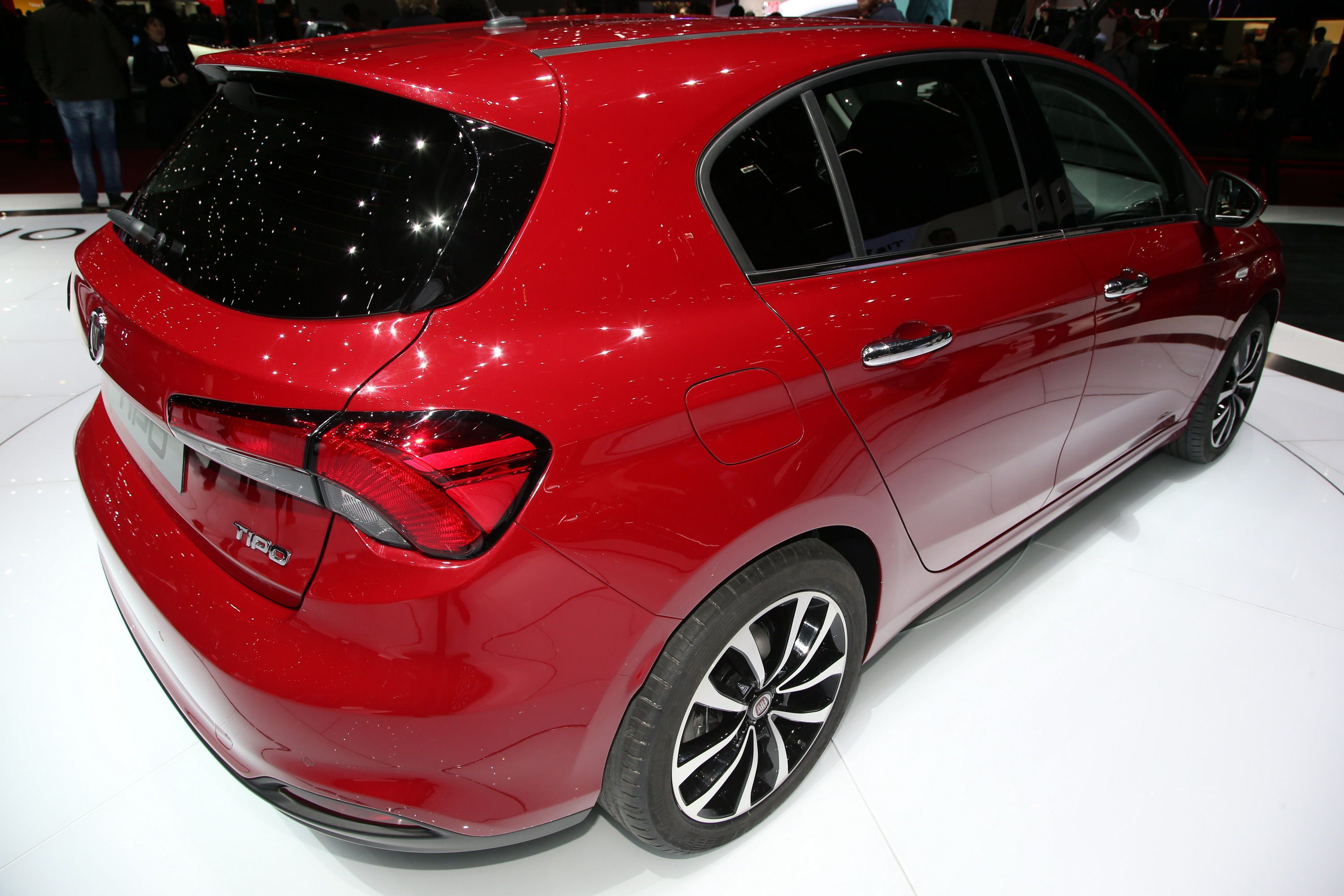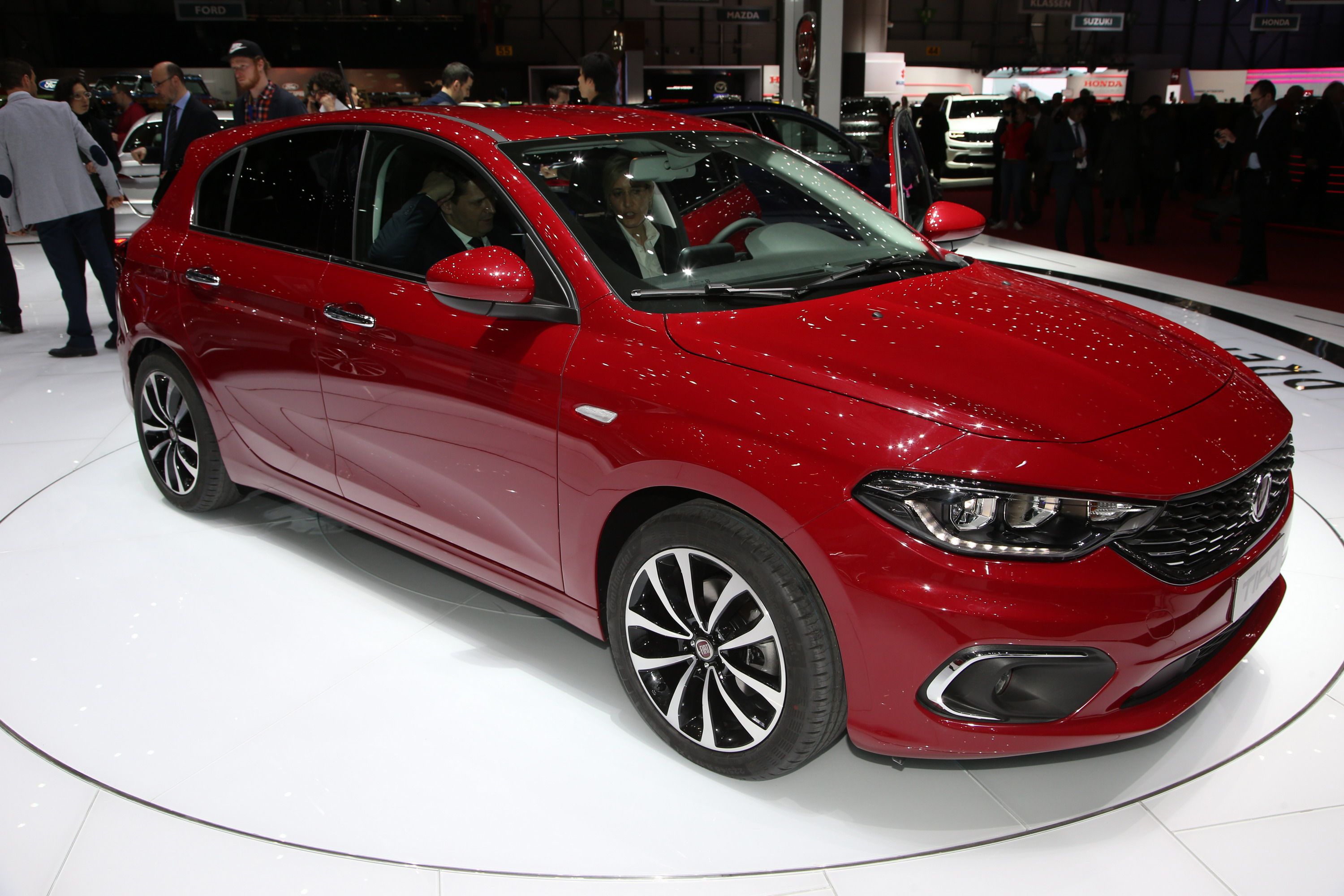In 2015, Fiat->ke30 unveiled the Egea, a concept->ke169 that previewed a compact sedan->ke142 designed to replace the aging Linea.->ke1982 A few months later, the production car with the same name was launched in Turkey and renamed the Tipo->ke5311 for other markets. It was a significant departure from its predecessor, employing a fresh design, a well-equipped interior, and a diverse engine lineup. Come 2016 and Fiat expanded the Tipo family with a hatchback->ke304 and a wagon.->ke143
Aimed at the highly disputed C-segment that includes popular hatchbacks such as the Volkswagen Golf->ke164 and the Ford Focus,->ke440 the Tipo replaces the Bravo,->ke2003 which was discontinued in Europe in 2014. However, like its sedan brother, the Tipo hatch will be a more affordable and simple car powered by less powerful, but significantly more fuel-efficient engines.
With the sedan gathering more than 20,000 orders in its first two months on the market, Fiat has high hopes for the Tipo hatch. The five-door model will be sold in the EMEA (Europe, the Middle East, and Africa) in three trim levels and an engine lineup that includes gasoline, diesel, and LPG units. Pricing is not yet available, but we'll be back with more info as soon as Fiat spills the beans.
Continue reading to learn more about the 2017 Fiat Tipo Hatchback.
2017 Fiat Tipo Hatchback
- Make: Array
- Model: 2017 Fiat Tipo Hatchback
- [do not use] Vehicle Model: Array
Exterior
As expected, the Tipo hatchback’s design is identical to the sedan toward the B-pillar. The front fascia sport a wide grille with "floating" chrome inserts, a pair of stylish headlamps, and a nicely sculpted muscular engine hood. The bumper also appears to be the same save for the round foglamps and revised black surrounds. Around back is where the Tipo will look different than its sedan sibling, ditching the traditional deck and trunk lid in favor of a tailgate. The taillights have also been redesigned compared to the sedan’s C-shaped units, while the bumper features a new lower section.
Naturally, the five-door is also shorter than the sedan. At 4.37 meters (172 inches), the hatch is 162 mm (6.4 inches) shorter, which should make it easier to drive and park in the city.
Complete specs are not yet available, but the hatchback should benefit from the same options as the sedan. Customers should be able to pick between 16- or 17-inch wheels and seven exterior colors, including Gelato White, Colosseo Grey, Amore Red, Cinema Black, Maestro Grey, Magnetico Bronze and Canal Grande Blue.
Overall, the five-door Tipo looks modern and sporty and its hatchback configuration makes it a prettier proposition compared to the sedan. Needless to say, a performance-oriented Abarth version would work well with the Tipo's stylish yet athletic design.
Interior
Note: Fiat Tipo sedan pictured here.
Much like the exterior, the interior too mirrors the sedan’s. It comes with the same fresh dashboard design, clean center console, new steering wheel, and a more upscale appearance overall. Although luggage space has been reduced from 520 to 440 liters (18.3 to 15.5 cubic feet), the hatchback is spacious enough for the segment it competes in.
Fiat claims that the Tipo offers best-in-class legroom with 1.07 meters (42.1 inches) between the edge of the front seat and the passenger’s heel and 934 mm (36.7 inches) for the rear seat. Also, the middle seat in the rear has been designed as a full-sized seat, offering enough legroom even for adult occupants.
Technology-wise, the Tipo comes standard with an LCD screen, AM/FM radio, and Bluetooth. The more expensive trims will benefit from a new Uconnect LIVE infotainment system with a seven-inch screen that works like a tablet, allowing users to pinch and swipe.
The infotainment system includes a hands-free Bluetooth interface, audio streaming, text reader and voice recognition, AUX and USB ports with iPod integration, controls on the steering wheel and, optionally, a rear parking camera and the new TomTom 3D built-in navigation system. Apple CarPlay and Android Auto will become available by the end of the year.
Drivetrain
The hatchback's engine lineup mimics that of the sedan, with three gasoline, two diesel, and an LPG drivetrain.
The gasoline range begins with the 1.4-liter Fire four-cylinder rated at 94 horsepower and 94 pound-feet of torque. The 1.4-liter T-Jet cranks out 118 horses and 159 pound-feet, while the larger 1.6-liter E-torQ delivers 108 horsepower and 112 pound-feet.
The same 1.4-liter T-Jet is available in the dual, LPG and gasoline configuration. It is also rated at 118 horses, but returns better mileage. Fuel-efficiency info is not yet available for either powerplant.
Moving over to diesels, the base unit is a 1.3-liter MultiJet II with 94 horsepower and 148 pound-feet of torque. More output comes from the larger 1.6-liter MultiJet II, which cranks out 118 horses and 236 pound-feet. This oil burner is said to need only 3.7 liters of fuel for every 100 km and emits just 98 grams of CO2 per km.
As far as transmissions go, the 1.3-liter MultiJet uses a five-speed manual, the 1.6-liter E-torq mates to a six-speed automatic with torque converter, the 1.6-liter MultiJet comes with a dual-clutch unit, while the remaining engines get six-speed manuals.
Prices
It’s too early to talk about prices here, but given that the sedan retails from €14,500 in Italy, it's safe to assume that the hatch will cost less than that, which would also make it more affordable than the €14,000 Punto. In the U.K., the Tipo hatchback could start from around £10,000 in base trim. Production will commence at Fiat’s Bursa plant in Turkey, with deliveries to begin in 2016. Just like the sedan, the five-door will be sold in Europe and several markets in Asia, the Middle East, and Africa.
Competition
Volkswagen Golf
The car to beat in this segment, the Volkswagen Golf is sold with a wide choice of powerplants in Europe, ranging from 1.0-liter three-cylinder units to 2.0-liter four-pots, in both gasoline and diesel guises. Gasoline models deliver between 84 and 148 horsepower, while oil burners generate between 108 and 148 horses. Unlike the Tipo, the Golf can also be had in three performance-oriented versions. There’s the GTI rated at 217 horses and 258 pound-feet, the R with 296 horsepower and 280 pound-feet, and the diesel-powered GTD that offers 181 horses and 280 pound-feet. Prices start from £17,595 (about $27,000) and go past the £25,000 (around $38,400) mark for the range-topping models.
Read more about the Volkswagen Golf here.
Nissan Pulsar
The Nissan Pulsar is brand-new for 2015 and, much like the Tipo, it marks a fresh start for the Japanese automaker in this tough niche. Sporting Nissan’s current styling language, the Pulsar comes with three engines. The base gasoline model uses a 1.2-liter DIG-T with 113 horsepower, while the range-topping 1.6-liter turbo-four cranks out 187 horses. The diesel version is powered by Renault’s ubiquitous 1.5-liter dCi and comes with 108 horsepower and 192 pound-feet of torque on tap. Pricing for the Pulsar starts from £15,995 (about $24,550), but the range-topping model costs £22,645 (around $34,800) before options.
Find out more about the Nissan Pulsar here.
Conclusion
It's difficult to predict what kind of impact the Tipo will have on the hatchback market at this point, but judging by the nameplates it will go against, its mission will be difficult to say the least. Nevertheless, Fiat will stand a better chance with a revised, more modern hatchback against the likes of the Nissan Pulsar and Volkswagen Golf than it did with the Bravo. Much like the sedan, the hatchback should enjoy some popularity in emerging markets due to its affordable price.
Spy Shots
February 16, 2016 - Fiat Tipo Hatchback reveals its rear lights
December 11, 2015 - First testing session


